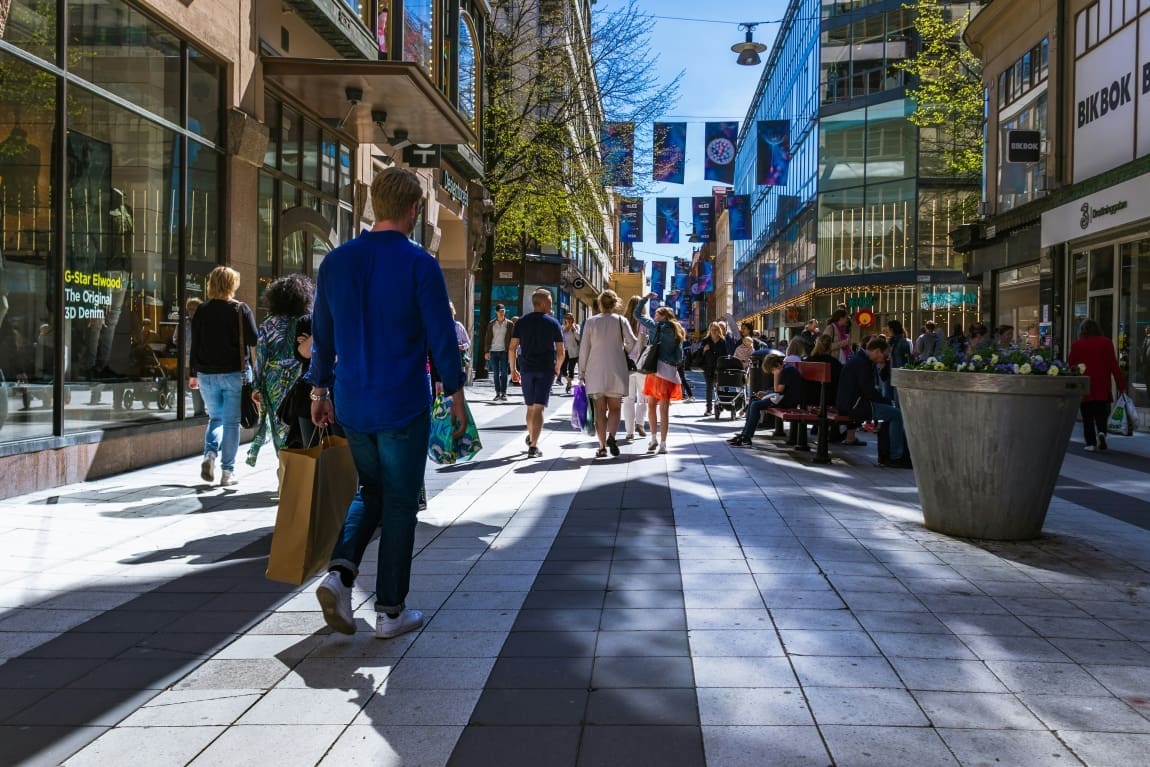By Susilawati, Monash University Malaysia in Petaling Jaya | 360info
By making walkability a central component of how we design our cities, we can create vibrant, inclusive and environmentally sustainable urban landscapes.
For decades, the primary goal of transport systems has been to move as much motorised traffic as quickly as possible from point A to point B.
However, focusing on motorised vehicular traffic has made the transport sector one of the largest contributors to global emissions, producing significant levels of CO2 and other greenhouse gases.
Consequently, modern transport planning, design and operations are increasingly driven by concerns about adopting greener, more sustainable systems that reduce emissions, improve public health and minimise costs.
This new paradigm focuses on transport decarbonisation strategies to combat global warming and emphasises a people-centric approach. It prioritises populations having access to efficient, safe and inclusive transport for a wide variety of trip purposes.
How to attract pedestrians
This shift aims to improve transport options and reduce both the frequency and overall distance of trips taken by motorbike or car, by promoting walking as the primary transport model.
The interplay between land use, urban design, and road infrastructure design is critical in creating walkable environments.
Efficient land-use planning can create compact, higher-density and mixed-use neighbourhoods where amenities and services are within walking distance (e.g., 15-minute city).
Good urban design fosters walkability by prioritising human-scale development.
This includes designing streetscapes and creating attractive public spaces, parks and amenities that are visually appealing and functional for pedestrians.
Features such as building orientation, street furniture (like benches, water fountains and rubbish bins), wayfinding signage and landscaping play significant roles in making streets more inviting and functional, enhancing pedestrians’ walking experience.
Road infrastructure should be designed to enhance connectivity, accessibility and pedestrian safety by providing wide, well-maintained footpaths and creating direct, continuous paths free from obstructions between key destinations.
To ensure pedestrians’ safety and comfort, adequate lighting should be provided to enhance visibility and reduce the risk of accidents.
Additionally, refuge islands and raised crosswalks can shorten distances, while frequent pedestrian crossings improve accessibility and convenience.
Smart infrastructure
Technology including smart infrastructure, data analytics and digital mapping and navigation can significantly enhance infrastructure design and promote walkability.
Smart infrastructure that integrates sensors and smart technologies can improve the efficiency and safety of pedestrian pathways. For example, smart traffic lights that adjust based on pedestrian flow can reduce waiting times and enhance safety.
Collecting and analysing data on pedestrian movement patterns can help urban planners identify high-footfall areas and prioritise improvements.
In addition, walking can be more appealing when detailed maps and navigation tools that highlight pedestrian-friendly routes and amenities are provided.
Integrating walking with other modes of transport through Mobility as a Service platforms that provide real-time information about public transport options and their proximity to walkable routes can create seamless travel experiences using a variety of different modes of transport and facilitate more sustainable travel choices.
The connection between good pedestrian infrastructure and increased public transport usage is evident by the study conducted in Sunway City Kuala Lumpur.
Improving walkability in already developed, car-dependent neighbourhoods and cities requires a multifaceted approach.
It requires retrofitting infrastructure, revising zoning policies and implementing placemaking.
Retrofitting roads
Existing streets can be retrofitted by using a road diet approach.
This involves reducing the number of lanes dedicated to cars to widen footpaths and make room for green spaces.
Implementing local area traffic management and traffic calming measures such as speed bumps, narrower lanes and roundabouts to reduce vehicle speeds are also strategies to retrofit existing streets to enhance pedestrian safety and encourage walking.
Revising zoning codes to allow for higher density and mixed-use developments can be achieved by repurposing existing — and potentially underutilised — spaces for new uses that can serve also as attractive destinations for walking.
For example, converting parking lots into pedestrian-friendly areas with shops, cafes, community gardens and parks. Or converting and repurposing old factories or historic buildings near public transport hubs into community centres or mixed-use developments.
To achieve the best results, land use and space conversion can be integrated with the placemaking process that focuses on creating vibrant, engaging public spaces by adding amenities like seating, lighting, public art and landscaping that reflect community needs and foster social interaction.
A walkability assessment based on a place’s walkability score — a multidimensional index assessing the pedestrian-friendliness of a location — is used to objectively assess walking-related strategies.
Such assessments can be further improved by using advanced AI-based image processing techniques to provide valuable insights into how pedestrians perceive safety and comfort.
Such tools can also automate the analysis of Google Street View data, allowing transport planners to identify trends and patterns in pedestrian perception across different urban areas.
This data-driven approach helps prioritise improvements, targeted interventions and policy decisions aimed at enhancing walkability, fostering healthier lifestyles and reducing reliance on cars and other forms of motorised transport.
Enhancing walkability is a powerful strategy for reducing greenhouse gas emissions and creating healthier, more vibrant and more sustainable urban communities.
By integrating thoughtful land use planning, urban design, and road infrastructure improvements and leveraging technology, cities can foster walkable environments that benefit both people and the planet.
Dr Susilawati is a senior lecturer in the School of Engineering at Monash University Malaysia.
Originally published under Creative Commons by 360info™.
Featured image credit: Tomas Williams | Unsplash




